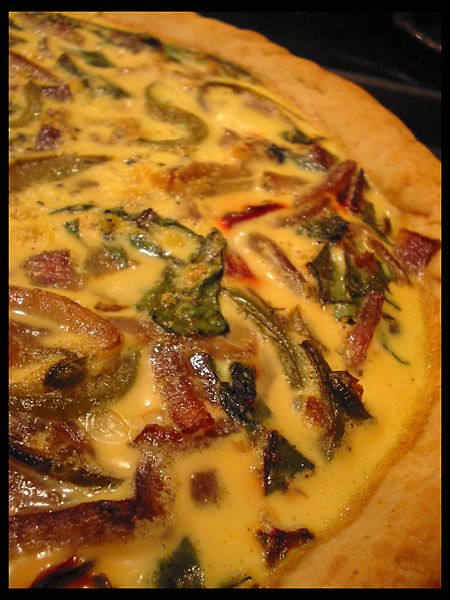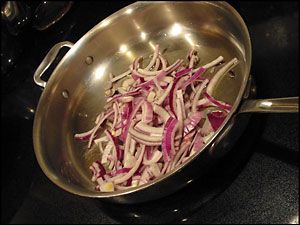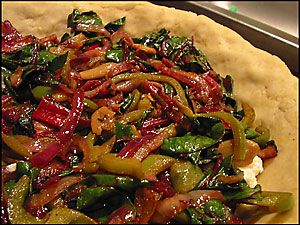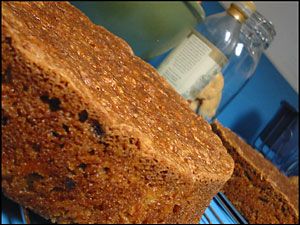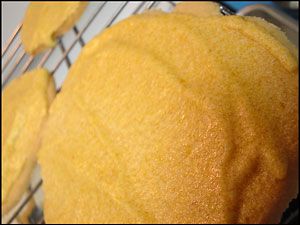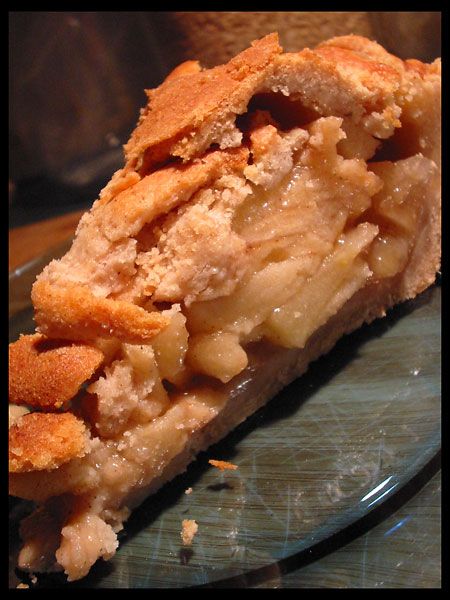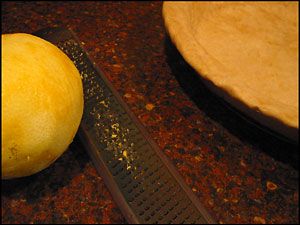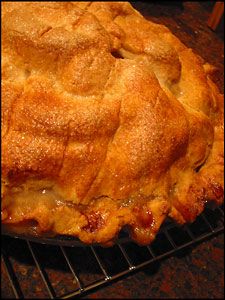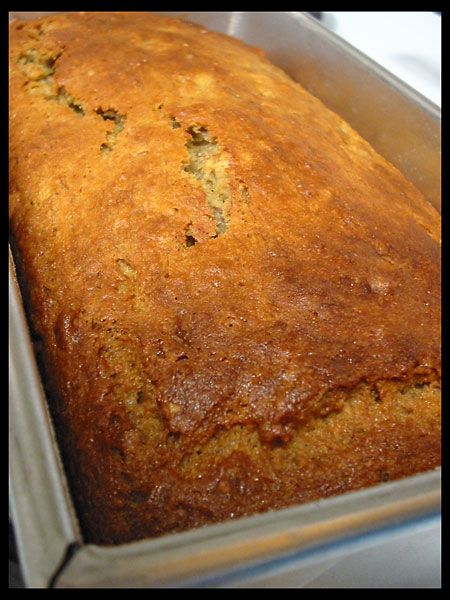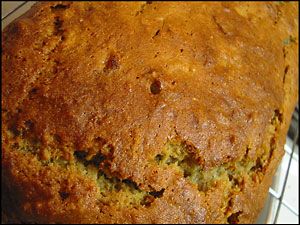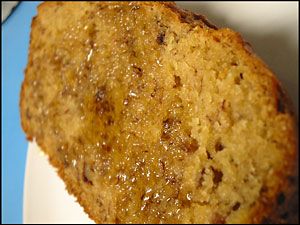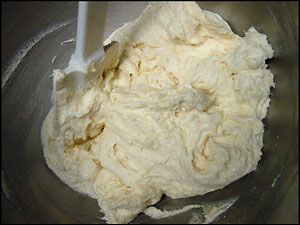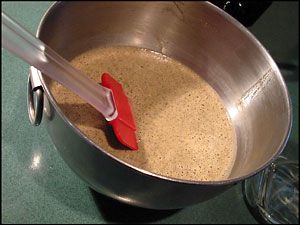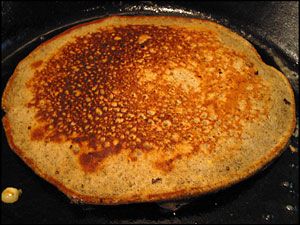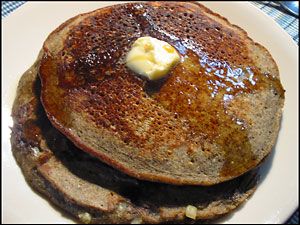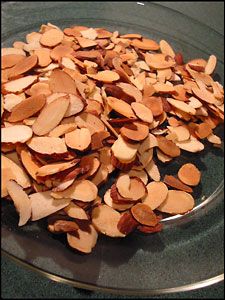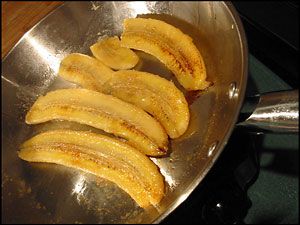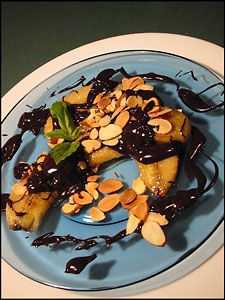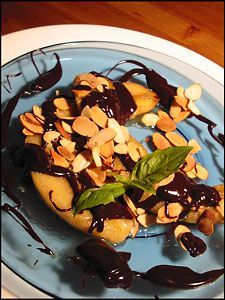Happy holidays, everyone.
And down in history goes my first Thanksgiving: at least, my first Thanksgiving making a significant contribution to the dinner table.
It was my year at my dad's this time. Aside from the small ham for the omnivores, the whole feast was vegetarian... and boy, it was good! At least, I think so. But hey, I'm a big fan of food. Especially when I can eat it.

Gracing our table (besides the ham) was many a good food. The appetizers consisted of cheese, my Grandma's deviled eggs, an olive/pickle/pepper tray, and Barb's stuffed mushrooms and cheese-pecan sandwich bites... I could make a meal of those alone. Easily. And when we sat down, we were greeted by the smells and sights of stuffed acorn squash, potatoes au gratin, harvest shepherd's pie with mashed yams, fresh green salad, and Grandma's legendary cranberry chutney that is, in my opinion, the highlight of every Thanksgiving. For dessert, pumpkin cheesecake and mince pie. Who could want a single thing more?
I debated which dish to blog about - I made the squash, shepherd's pie, and mince pie - and I finally settled on the squash. I'm particularly proud of it because I came up with the recipe. OK, no big deal, but I'm proud anyway. Probably because I was afraid it would taste bad. Or bland. Or just stupid. And it didn't :)
The shepherd's pie was very tasty. I got the recipe from the Whole Foods Cookbook - you can also find the recipe on the Whole Foods website. Instead of ground beef, it gets its protein and texture from crumbled tempeh. I chose "garden vegetable" tempeh instead of plain tempeh because... well, it can't hurt. It's a vegetable dish. This was my first experience with tempeh (at least, that I can remember) and wow. I found a new tofu substitute. I'm impressed! And it's gluten-free, to boot. Instead of mashed potatoes on top, this dish has these delicious orange yams and sliced almonds... oh boy. It tasted like yumm. The yams were seasoned by a mixture of butter, orange juice and zest, and brown rice syrup simmered into a viscous liquid. It gave it character. It tasted like Thanksgiving.

And mince pie? The recipe is from my book Baking Illustrated by the editors of Cook's Illustrated magazine. The first mincemeat mixture I simmered up was scorched black. 6 organic apples, 2 cups of apple cider, a stick of organic butter, a cup each of organic raisins and currants, an organic lemon and organic orange, a selection of organic spices and some amount I don't remember of organic dark brown sugar - all ruined. *facepalm*
But it was OK - mum came to the rescue, new ingredients were bought, apples were re-peeled and diced, and mincemeat was back on the stove in no time. This time, I stood there for three hours, stirring it every five minutes. As a result, the mincemeat was a little... well, resembling of apple butter, but it sure tasted good. And it wasn't scorched. Stick it in a gluten-free crust with a lattice top (don't even go there... no easy task, that), and voila. Easy as pie.
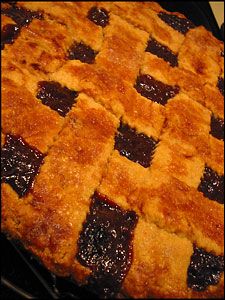
From this experience, I learned (as I have learned in the past) that the settings on an electric stove are not the same as those on a gas stove, and Cook's Illustrated writes for a gas stove. But I have electric. *sigh* Such is the life of a over-ambitious hungry person.
And my squash - oh, how proud I am. I wanted a gluten-free stuffing, so I thought hey! Rice. Wild rice is native to the states... perfect. And what goes with rice?
Beans!
Which brought me to this "Three Sisters" idea I keep running across that combines beans, squash, and corn. And I seized ahold of that like a jack russell terrier sizes a rope toy with a labrador at the other end, and hell if I was gonna let go...
Ahem.
To make a long story short, I chose Anasazi beans because of their relative close proximity to the Great Lakes area (home of wild rice) - within trading distance, anyway. And acorn squash, because it's so darn cute and easy to stuff. Sage to season, because it grows wild here in the US. And frozen corn, because... well, fresh isn't in season anymore, and canned has added salt. Ha.

ACORN SQUASH WITH WILD RICE STUFFING
1/2 cup dry Anasazi beans, picked over
1 tsp salt
2 cups vegetable broth
1 cup wild rice
4 medium acorn squash
2 tbsp butter, softened
1 cup chopped onion
1 cup frozen (or fresh) corn kernels, thawed
2 tbsp butter
1 tbsp finely minced fresh sage leaves
6 cloves (or one medium head) roasted garlic, mashed
Salt and freshly ground pepper to taste
2 tsp dry yellow mustard powder
2 tsp salt
1. To soak the beans, add beans to a heavy pot and cover with water by two inches. Bring to a boil over medium-high heat. Boil five minutes and remove from heat. Cover and let stand for one hour.
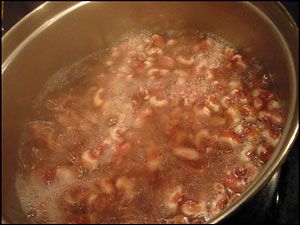
2. Drain the soaking liquid from the beans. Cover again with water by two inches. Bring to a boil, then reduce heat to low. Cover, with lid slightly ajar, and simmer gently for 35-40 minutes. When you can squish a bean with your fingers, add salt and continue to simmer until desired tenderness (about 10 minutes more). Remove from heat, drain, and smell them. Kinda smokey... kinda salty... kinda like bacon. Except better, because nobody had to die. And beanier.
3. Bring vegetable stock to a boil in a medium saucepan. Add rice. Return to a boil and turn heat down to low. Cover and simmer 40-45 minutes, or until rice is fully cooked (it may pop a little, but it should be a little toothsome and nutty still). Transfer to a separate bowl and fluff with a fork. Reserve.
4. Preheat oven to 400°F. Cut each acorn squash in half, from the stem down. Remove seeds and discard (or reserve to toast later, if you want). Prick cavities with a fork, and rub each cut side with butter to coat.
5. Place squash halves cut-side up in a large baking dish with 1 inch water. Roast for about 35 minutes, or until just fork-tender.
6. Remove squash from oven and rest until cool enough to handle.

7. Sauté onions in butter over medium heat 2-3 minutes. Add corn, drained beans, and sage, cooking an additional minute or two. Remove from heat.

8. Scoop flesh from the squash halves, leaving a 1/2-inch shell. Mix flesh with roasted garlic and season with salt and pepper. Gently fold into rice, bean, and corn mixture, carefully not smashing the beans.
9. Rub mustard powder and remaining salt into squash shells. Stuff with stuffing and return to oven in the same baking dish. Bake an additional 25 minutes or until squash is tender and stuffing is heated through.
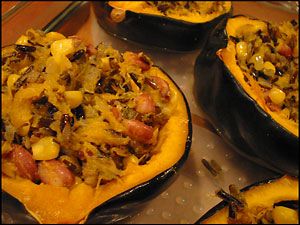 PROS: very Thanksgivingy, hearty yet vegetarian, nutritious and delicious
PROS: very Thanksgivingy, hearty yet vegetarian, nutritious and delicious
CONS: could use some tweaking as far as ratios go, and cooking times, but I lurrved it anyway
So there we have it.
